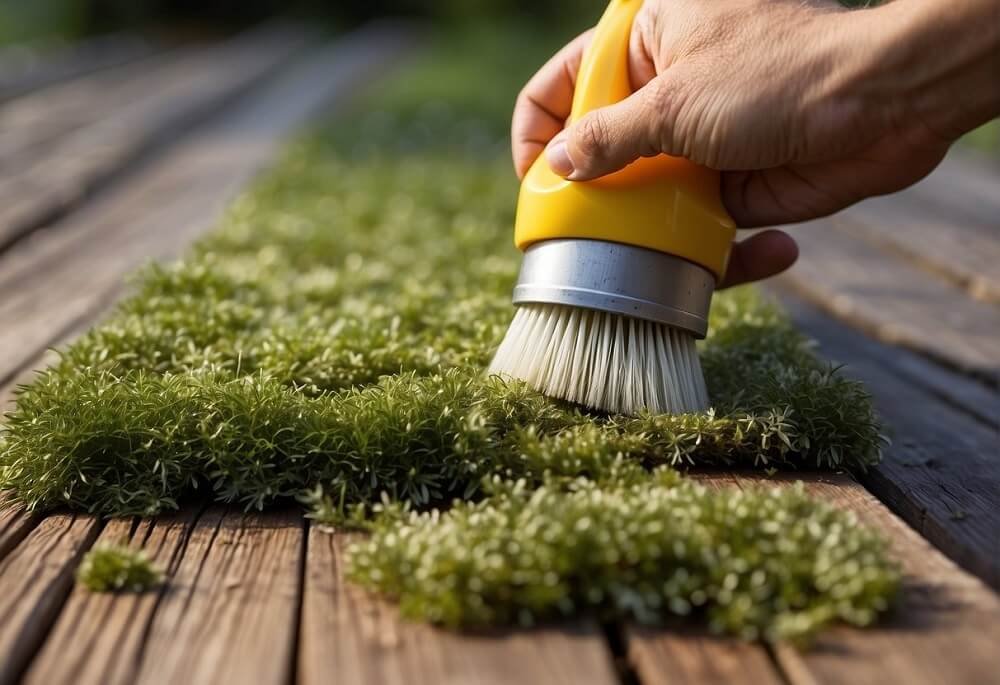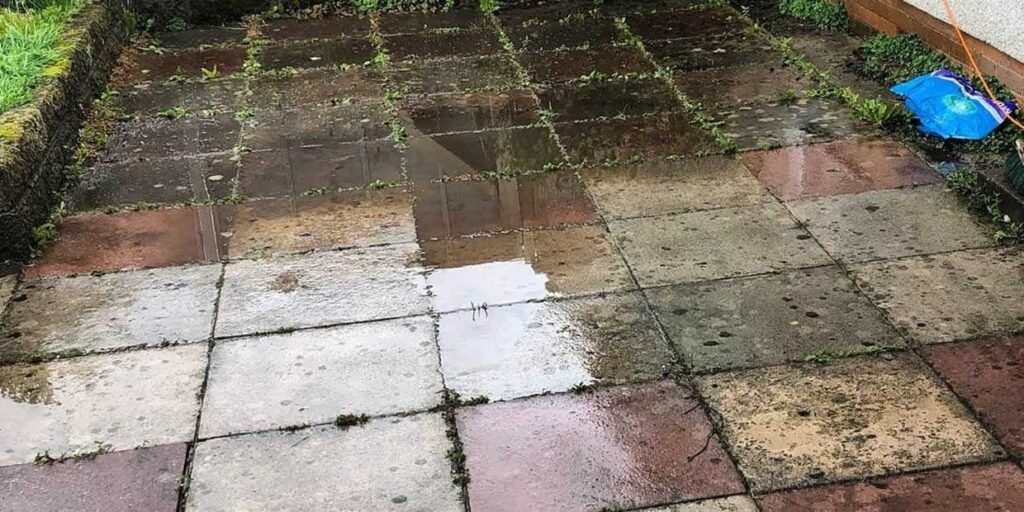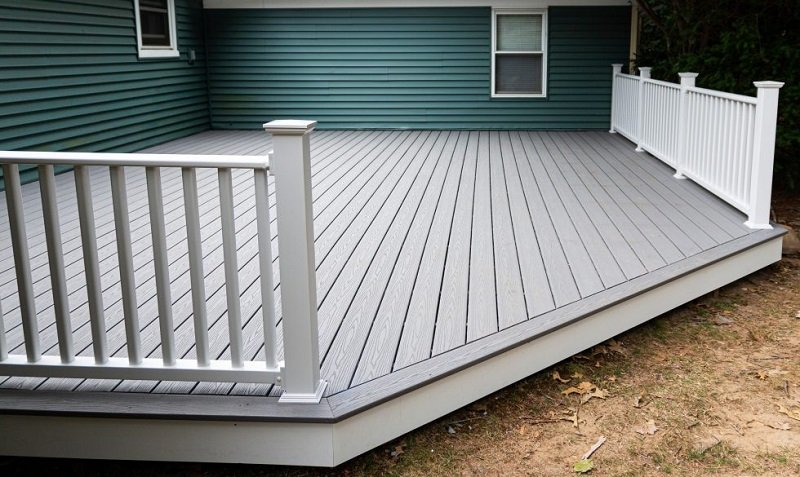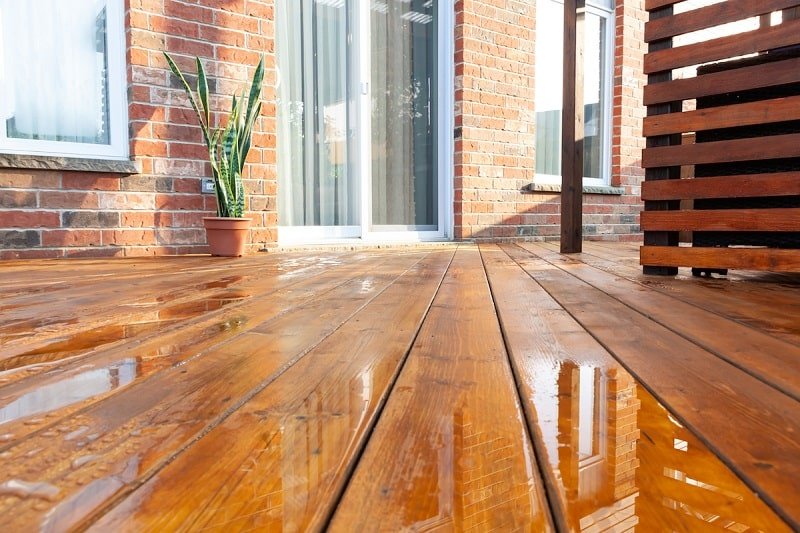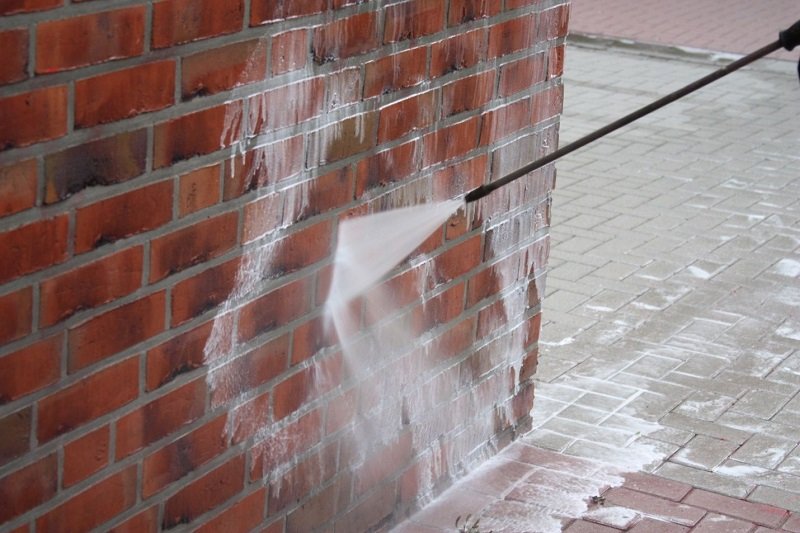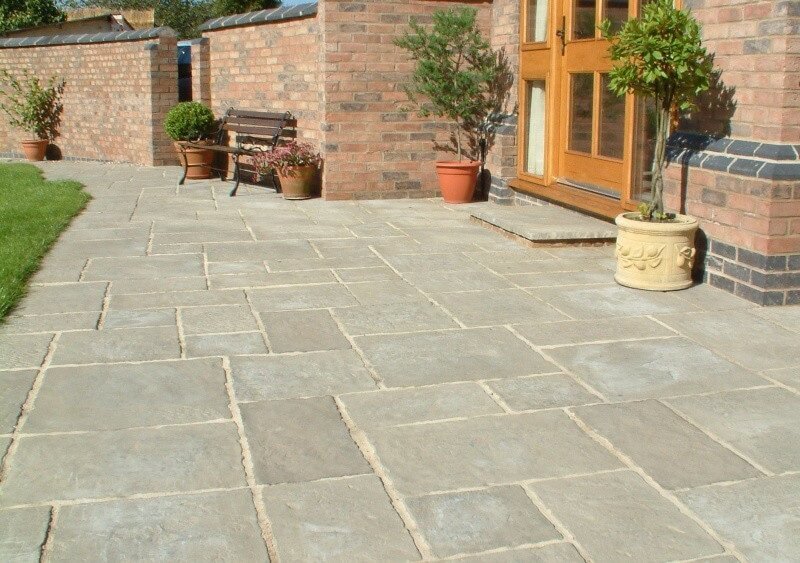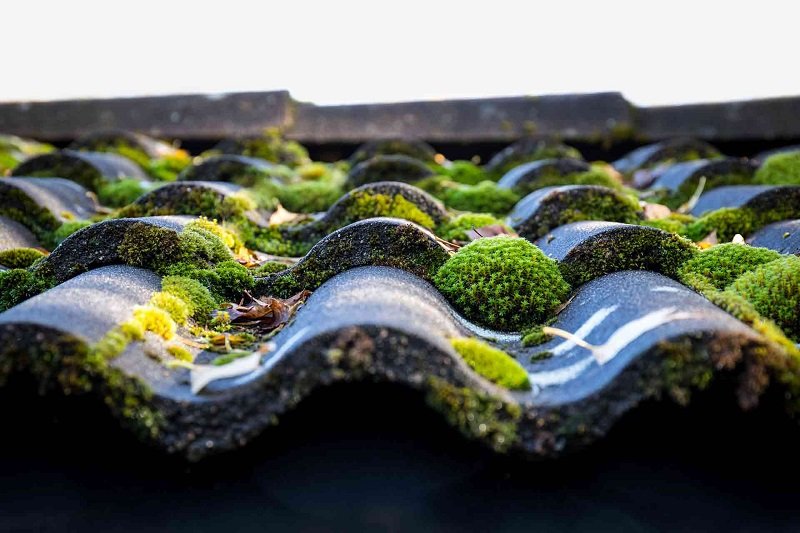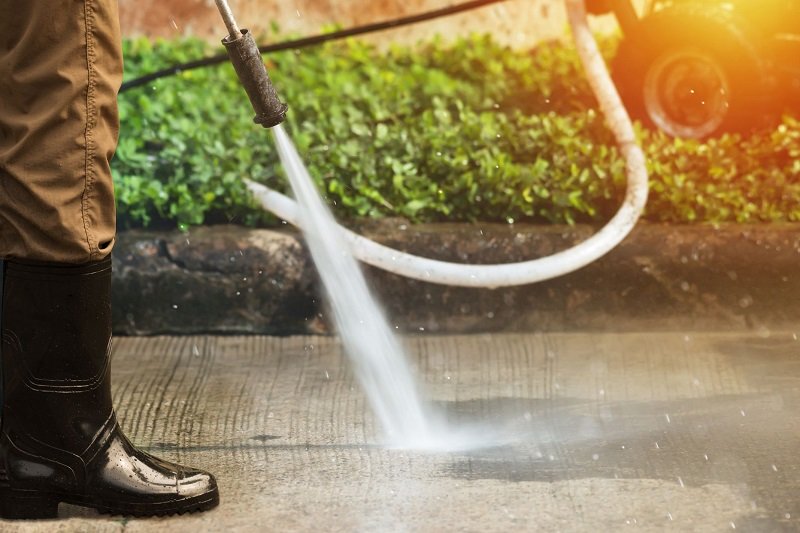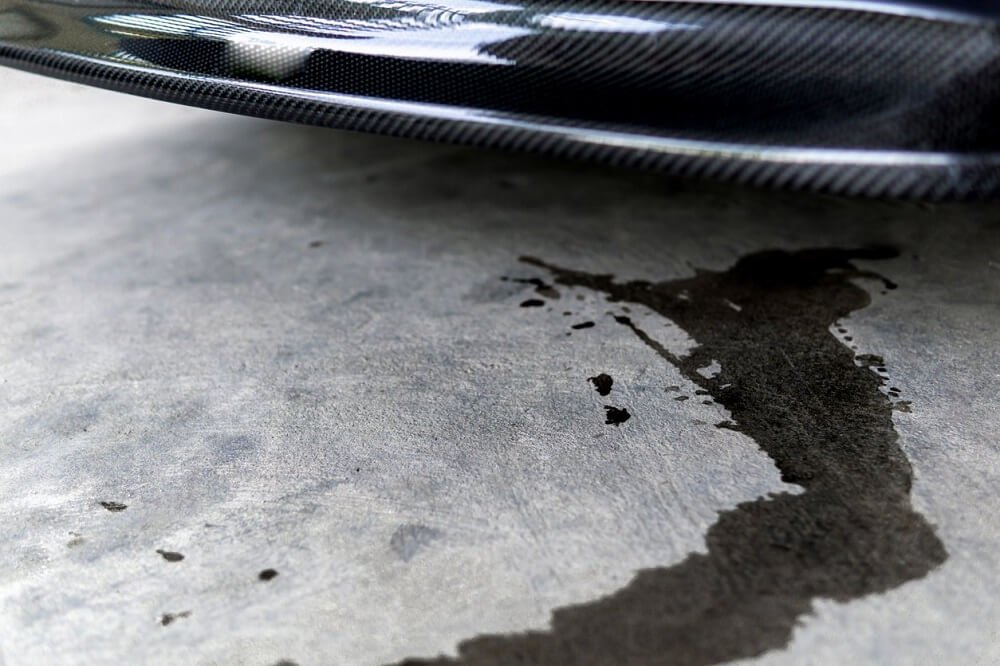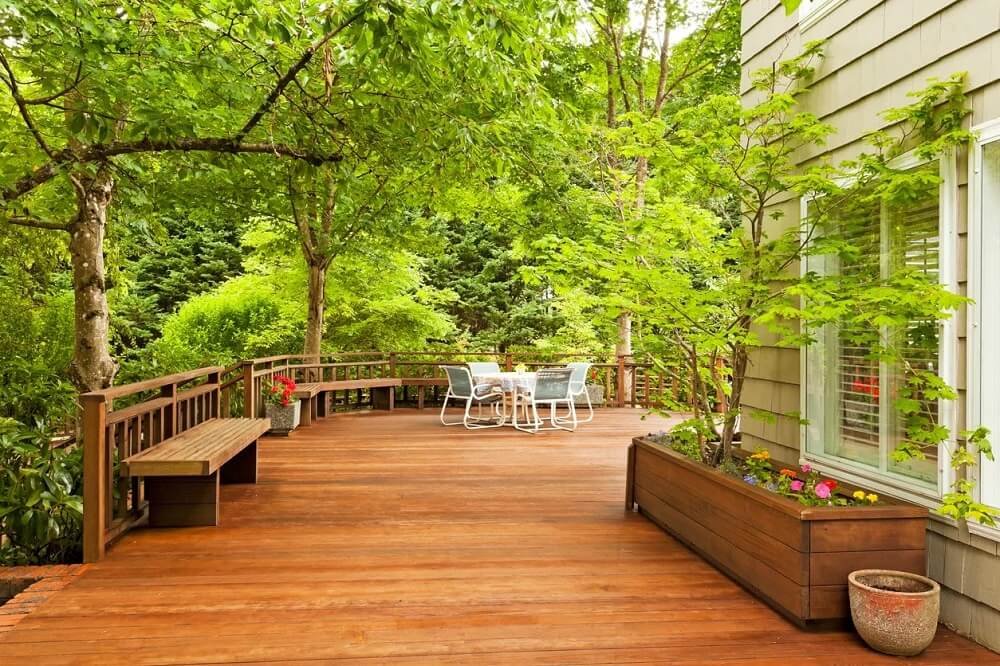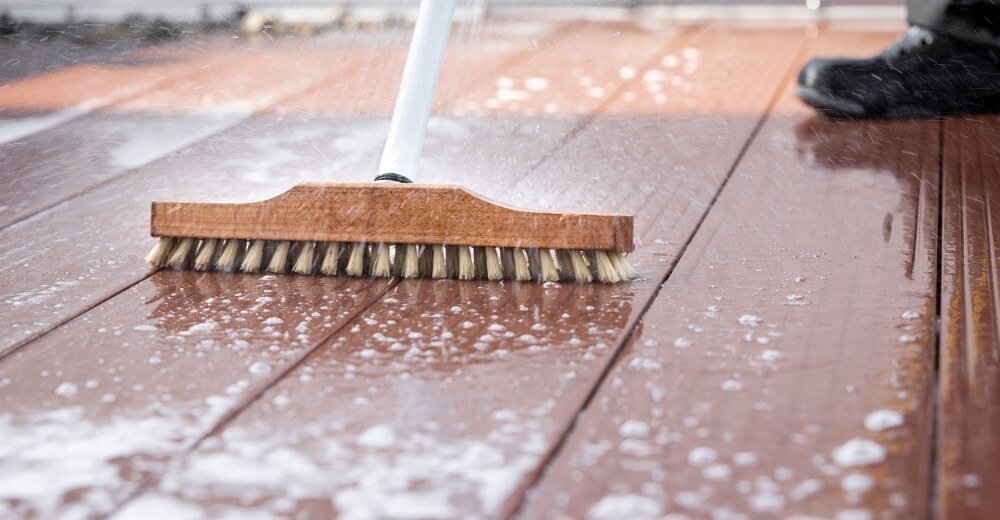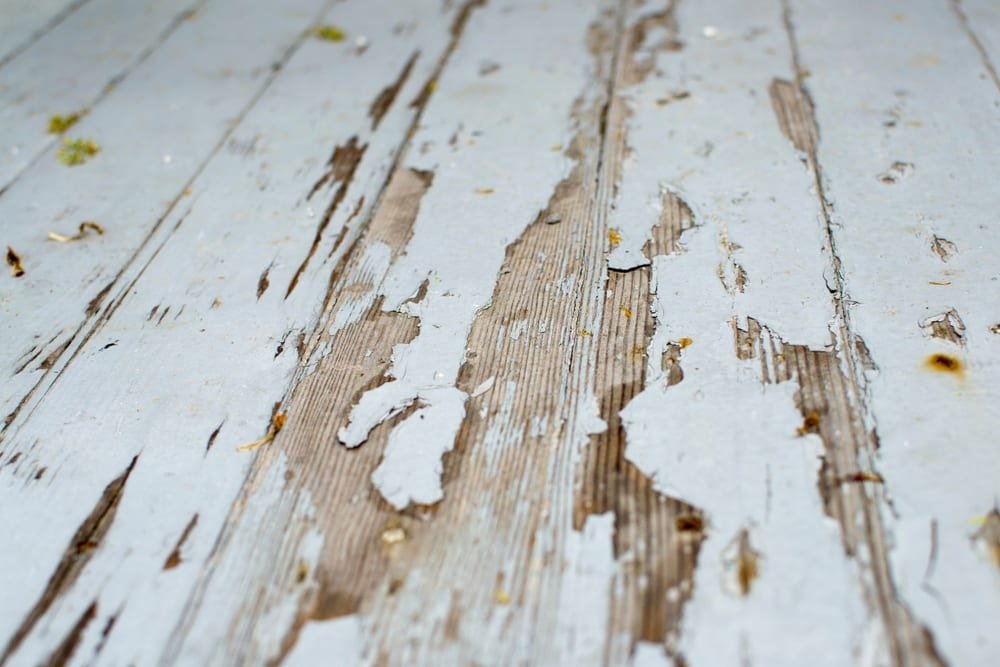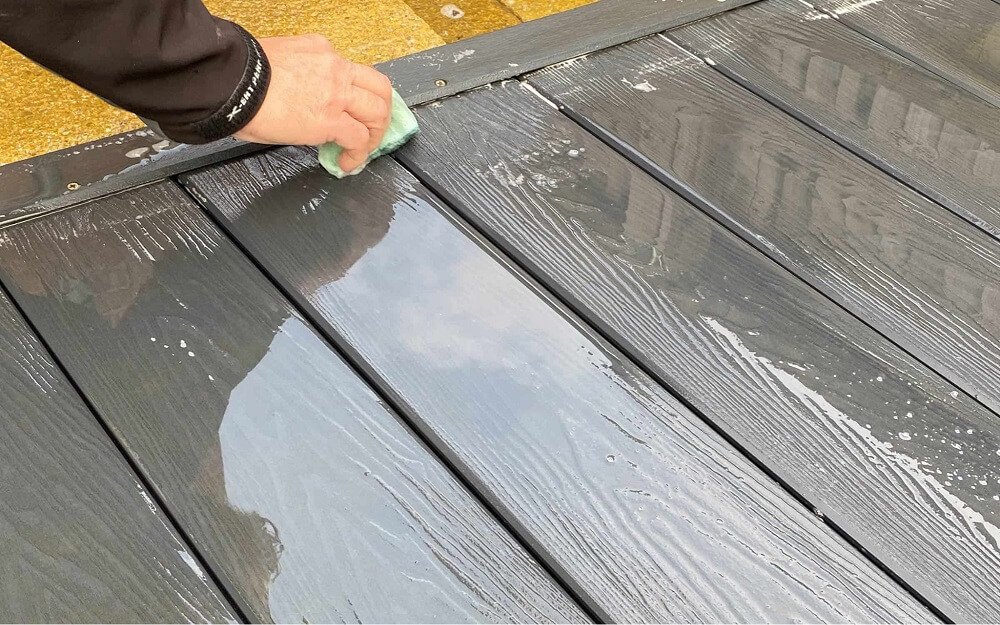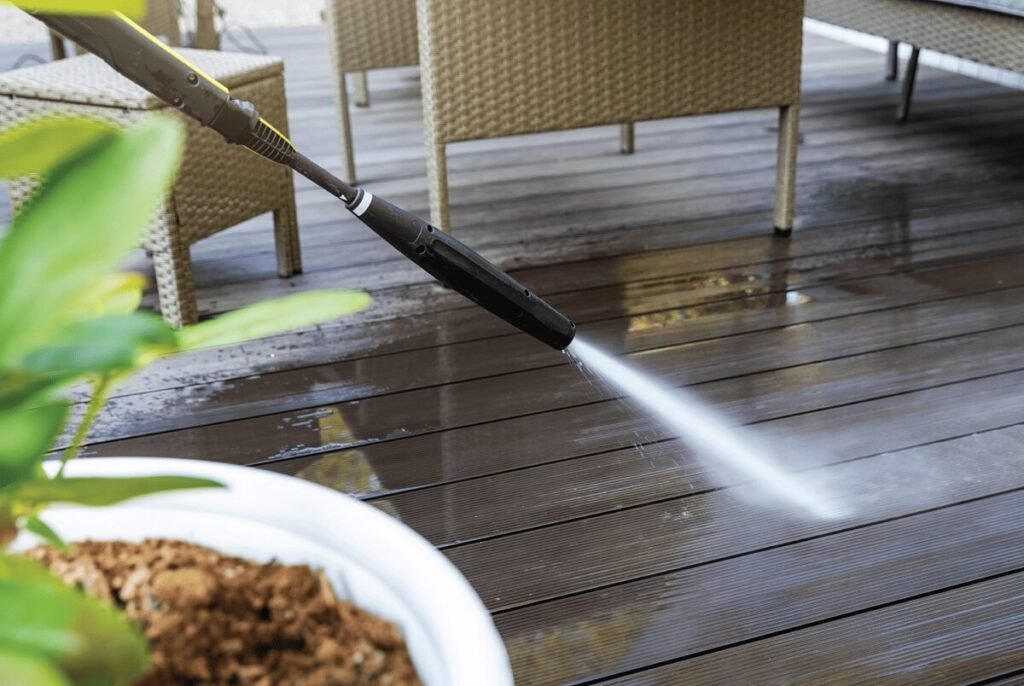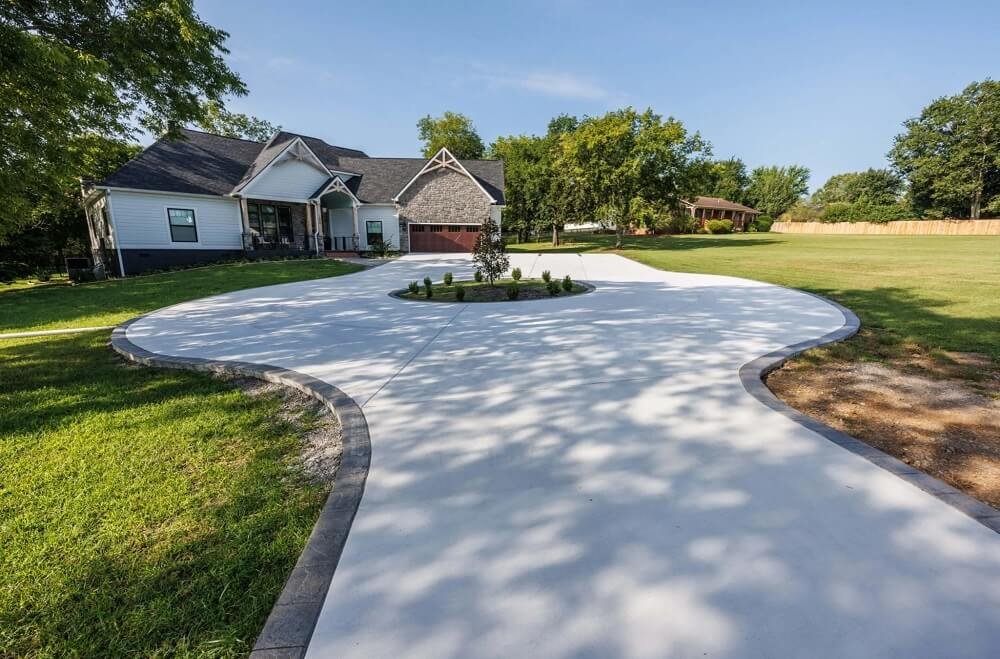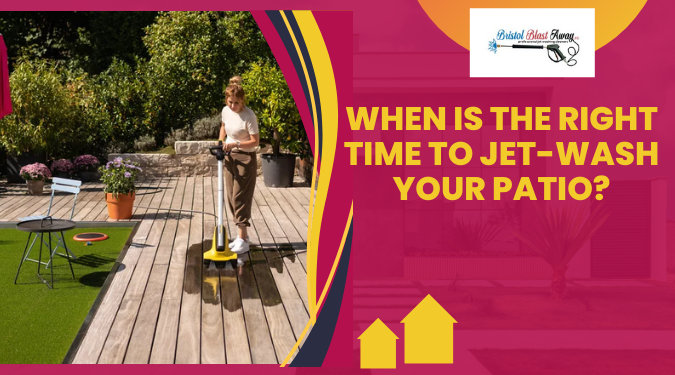We’ll safely remove moss and algae and bring back your deck’s natural look.
If you’ve been wondering how to remove algae from deck surfaces without causing damage, you’re not alone. Algae and moss not only spoil the look of your decking but also make it dangerously slippery.
Using the right safe cleaning methods, you can tackle the problem effectively, protect the wood and keep your outdoor space looking fresh and welcoming throughout the year.
Why Do Algae and Moss Grow on Decking?
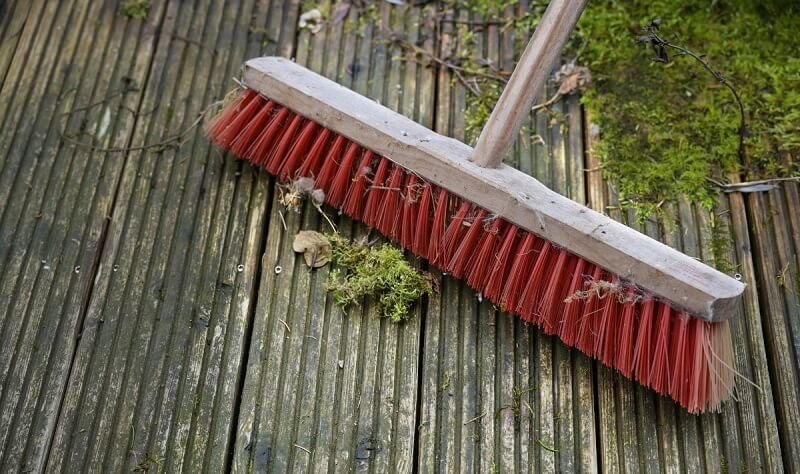
Decking is constantly exposed to the elements, which makes it the perfect home for unwanted growth. Moisture, shade, and poor drainage are the main culprits, when rainwater lingers and sunlight can’t fully dry the boards, algae and moss begin to thrive.
Algae usually appears as a thin, slippery green film, while moss forms in thicker, spongy patches that cling to shaded areas. Both may seem harmless at first, but over time they can cause real problems: from slippery surfaces that put you at risk of falling, to staining and gradual wood decay that shortens the life of your decking.
By understanding why these growths occur, you can take the right steps to prevent them and keep your outdoor space looking its best.
Spotting the Early Signs of Growth
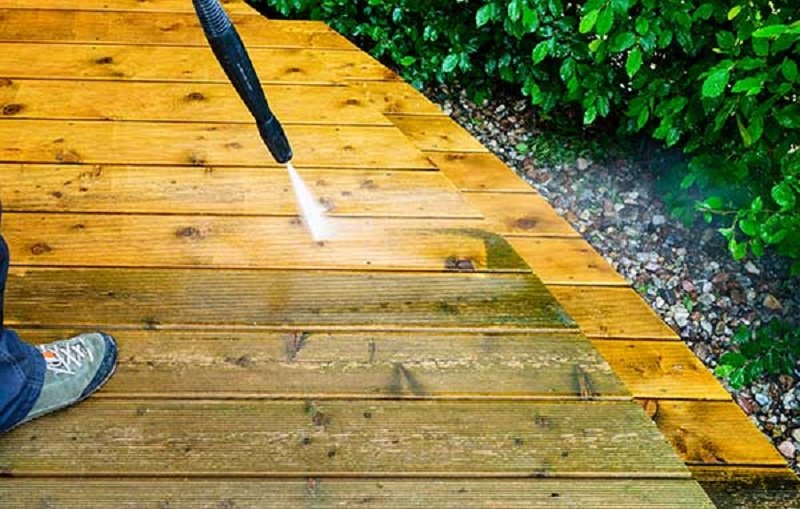
Catching algae and moss early makes cleaning much easier and helps protect your decking for the long run. Here’s what to look out for:
Visual clues
The first signs often show up as greenish or black patches spreading across the boards. You may also notice a slippery feel underfoot, even when the decking looks fairly clean. These are clear indicators that algae is starting to settle in.
Hidden problem areas
Not all growth is obvious at first glance. Algae and moss love shaded corners, damp spots under plant pots, and areas near gutters where water tends to collect. Checking these places regularly can help you spot problems before they spread across the whole deck.
Preparing Your Deck Before Cleaning
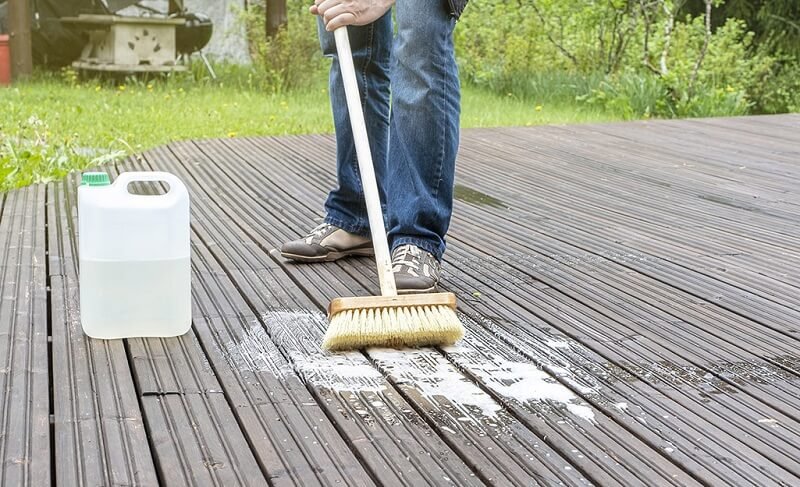
Getting your decking ready is just as important as the cleaning itself. Algae and moss tend to hide in corners and under furniture, so the first step is to remove anything on the surface: chairs, tables, planters and ornaments. This gives you full access and prevents dirt from shifting around while you work.
Once cleared, sweep the decking thoroughly to lift away leaves, dust, and debris. This simple step helps expose the algae and moss, making it easier to target problem areas directly.
Before you begin cleaning, it’s a smart idea to lightly wet the surface. A quick rinse softens stubborn growth and prevents cleaning products or brushes from damaging the wood. With these easy preparations, your deck is primed for a safe and effective clean.
Best Solutions for Removing Algae and Moss
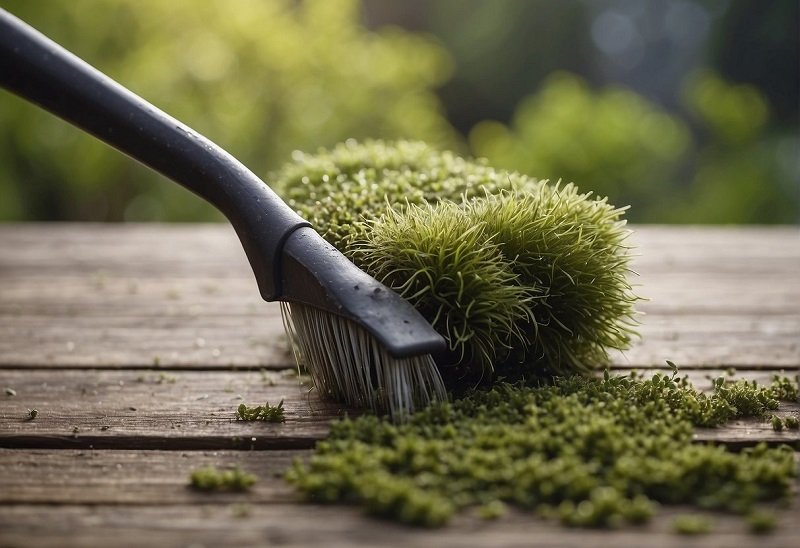
There’s no single way to deal with algae and moss, but some methods are far safer and more effective than others. From simple household remedies to eco-friendly cleaners, the right choice depends on how severe the problem is and how much effort you want to put in. Here are the best options:
Everyday household options
– You don’t always need specialist products to bring your decking back to life.
– White vinegar mix, a natural solution that breaks down algae without harming the wood.
– Baking soda, ideal for spot-treating stubborn patches.
– Soda crystals, effective against greasy build-up or areas with heavier staining.
Eco-friendly store-bought cleaners
If you’d rather skip the DIY route, eco-friendly cleaners are a smart choice.
– Biodegradable decking cleaners, tough on algae but gentle on the environment.
– Pet- and plant-safe solutions, perfect for gardens and outdoor spaces where safety matters.
At Bristol Blast Away, we take pride in using eco-friendly, plant-safe products whenever possible. It means your decking gets a deep clean while your garden and the environment stay protected.
What to avoid
Some methods might look quick and easy, but they can do more harm than good.
– Harsh bleach or acidic chemicals, these can damage timber and harm surrounding plants.
– Metal scrapers, they may lift the growth, but they also scratch and weaken the decking surface.
Step-by-Step Guide: How to Remove Algae & Moss From Decking
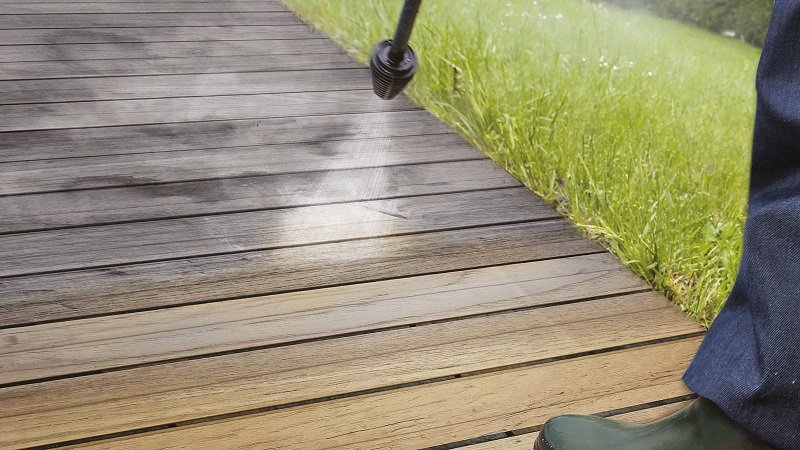
Cleaning algae and moss doesn’t have to be complicated. By following these simple steps, you can restore your decking safely and effectively, without risking damage to the wood.
Step 1 – Apply your chosen solution
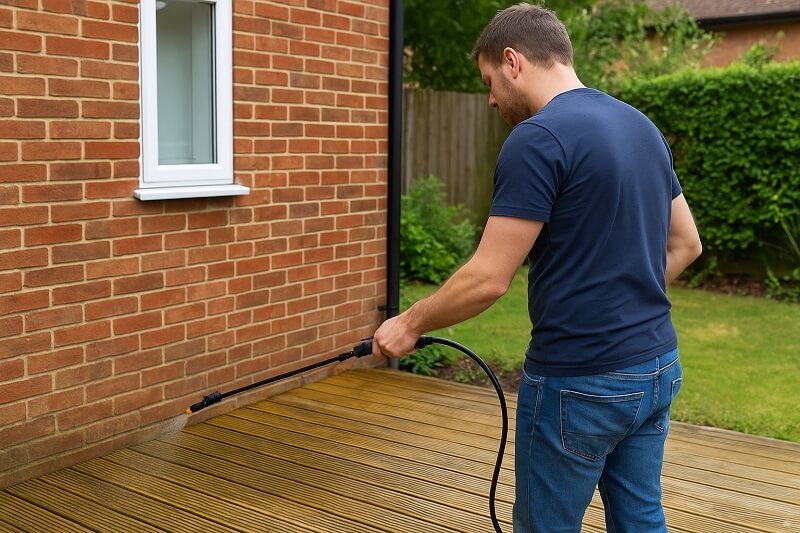
Start by applying a natural mix (vinegar & water, or baking soda paste) or a store-bought algae remover. Spread it evenly using a mop, watering can, or sprayer. For larger decks, you can also pre-treat with a low-pressure washer using a detergent attachment.
Step 2 – Allow time to work
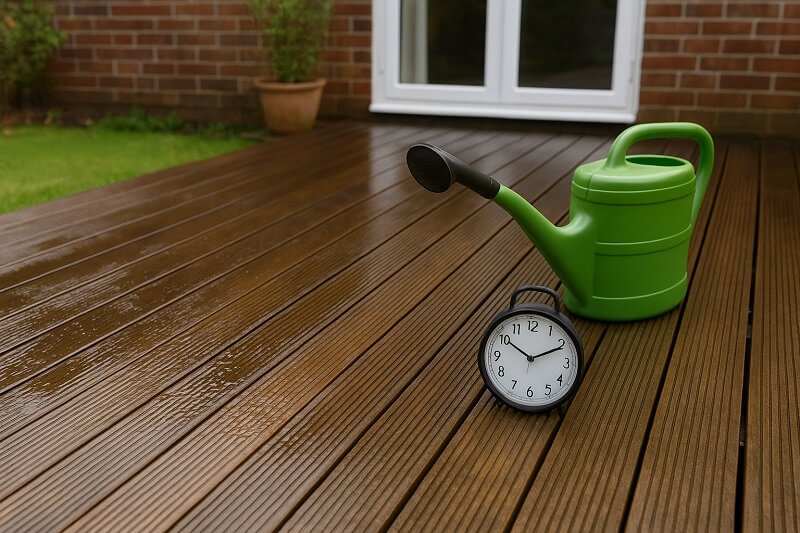
Give the solution 10–20 minutes to break down the algae and moss. Just make sure it doesn’t dry out completely in direct sunlight, as this can reduce its effectiveness.
Step 3 – Scrub the decking
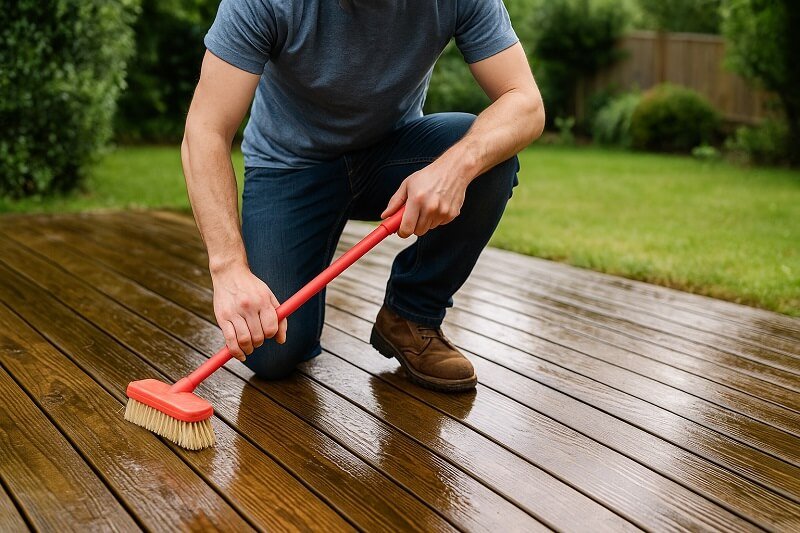
For manual cleaning, use a stiff-bristle brush and scrub gently along the wood grain, paying extra attention to shaded corners and areas under plant pots.
If you prefer pressure washing, keep the nozzle at least 20–30 cm away and use a wide fan setting to avoid damaging the timber.
Step 4 – Rinse thoroughly
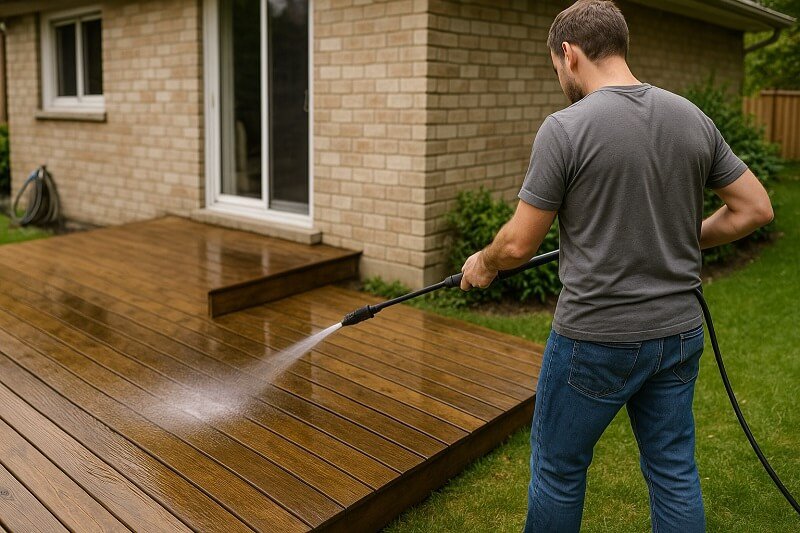
Rinse away the loosened algae and moss with a garden hose. If you’re using a pressure washer, keep it at low to medium power to prevent splintering or stripping protective coatings.
Step 5 – Let the decking dry completely
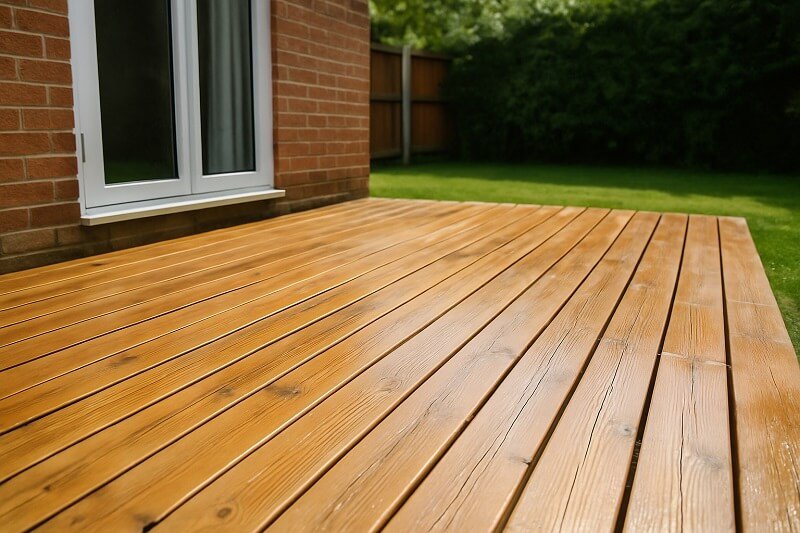
Allow the decking to air-dry fully before replacing furniture or planters. Proper drying stops damp spots forming and helps prevent regrowth. For extra protection, you can also apply a decking oil or sealant once everything is dry.
Preventing Algae & Moss From Coming Back
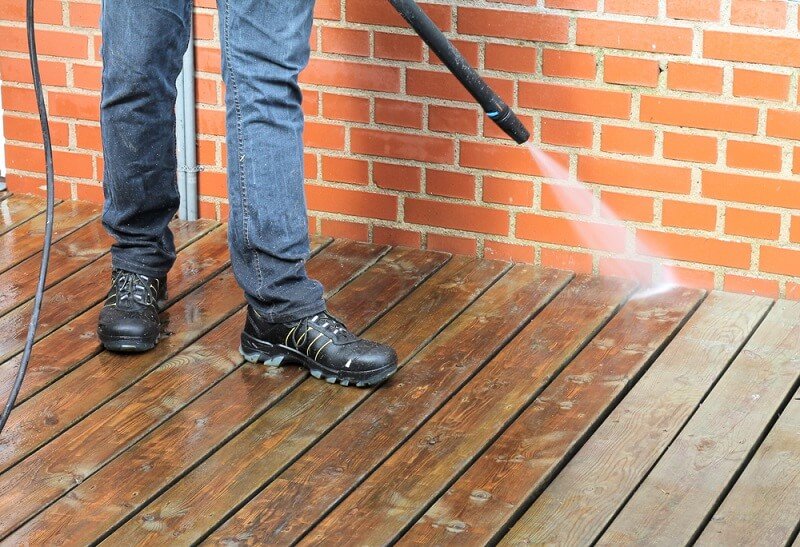
Once your decking is clean, the real secret is keeping it that way. Algae and moss thrive in damp, shaded spots, so a few simple habits can make all the difference. With regular care and a bit of forward planning, you can keep your deck looking fresh for years to come.
Routine maintenance
A little upkeep goes a long way.
– Sweep weekly to remove leaves, soil, and organic matter that feed growth.
– Rinse monthly during damp seasons to stop moisture from settling into the boards.
Smart decking habits
How you use your outdoor space can prevent algae and moss from returning.
– Raise plant pots on stands or trays to allow airflow underneath.
– Trim back overhanging branches so more sunlight can reach the deck.
Seasonal protection
Give your decking an extra layer of defence.
– Apply decking oil or sealant each spring to lock out moisture.
– Check for water pooling after heavy rain and fix drainage issues quickly to avoid damp patches.
When DIY Isn’t Enough
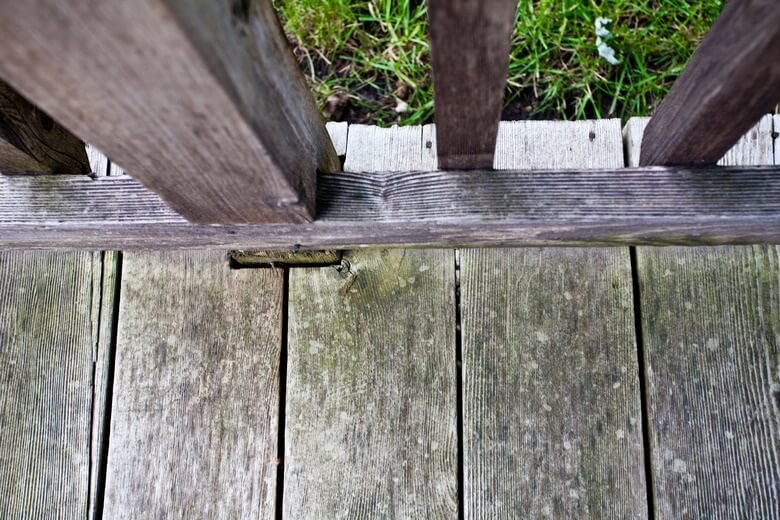
While small patches of algae and moss are easy to tackle yourself, some situations call for more than a bucket and brush.
– Deep-rooted moss in timber cracks, once growth works its way into the wood, it’s tough to remove fully without specialist tools.
– Large decks with heavy algae growth, scrubbing such a big area is exhausting and time-consuming, and results are often patchy.
– Slippery surfaces creating safety risks, if your deck feels like an ice rink, it’s safer to let professionals restore grip with the right treatments.
That’s where a team like Bristol Blast Away makes the difference. We use safe, eco-friendly methods and professional equipment to bring even the most neglected decking back to life, saving you hours of effort and giving you results that last.
FAQs About Algae & Moss Removal
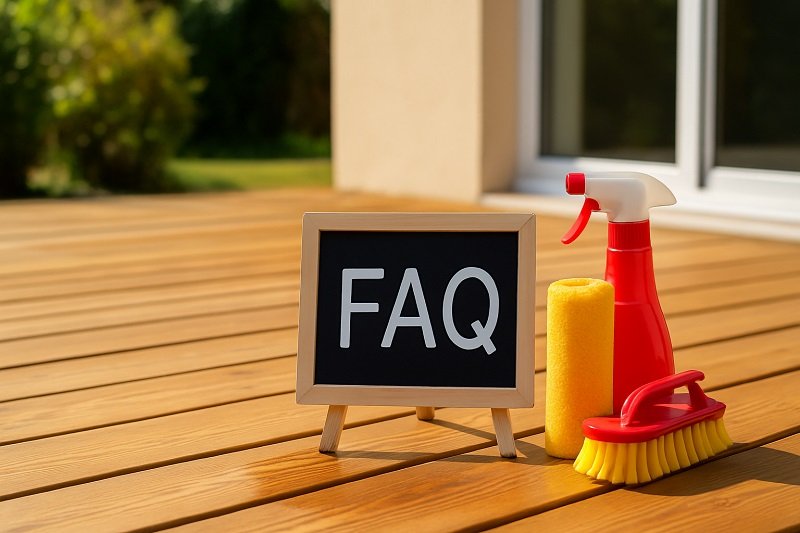
It’s normal to have a few questions when it comes to keeping your decking free from algae and moss. Below, we’ve answered the most common ones to help you clean and protect your outdoor space with confidence.
1. Can I use bleach to remove algae?
It’s not recommended. Bleach can damage timber, harm plants, and create long-term staining. Safer alternatives like vinegar or eco-friendly cleaners work just as well without the risks.
2. What’s the fastest natural method for moss removal?
A paste of baking soda and water works quickly for spot treatments, while a vinegar mix is effective for larger areas.
3. Is vinegar safe for all decking types?
Vinegar is safe for most timber decks when diluted properly. However, always test a small area first and avoid prolonged contact with metal fixin.
4. How often should I treat decking for algae?
Most decks benefit from a light clean every spring and autumn. In damp, shaded gardens, monthly rinsing may be needed to keep algae under control.
5. Do composite decks get algae too?
Yes, although they don’t rot like timber, composite boards can still grow algae on the surface if left damp and dirty.
Still have questions or simply want the best results without the hassle?
Get in touch with Bristol Blast Away today and let our team restore your decking with safe, eco-friendly methods.

